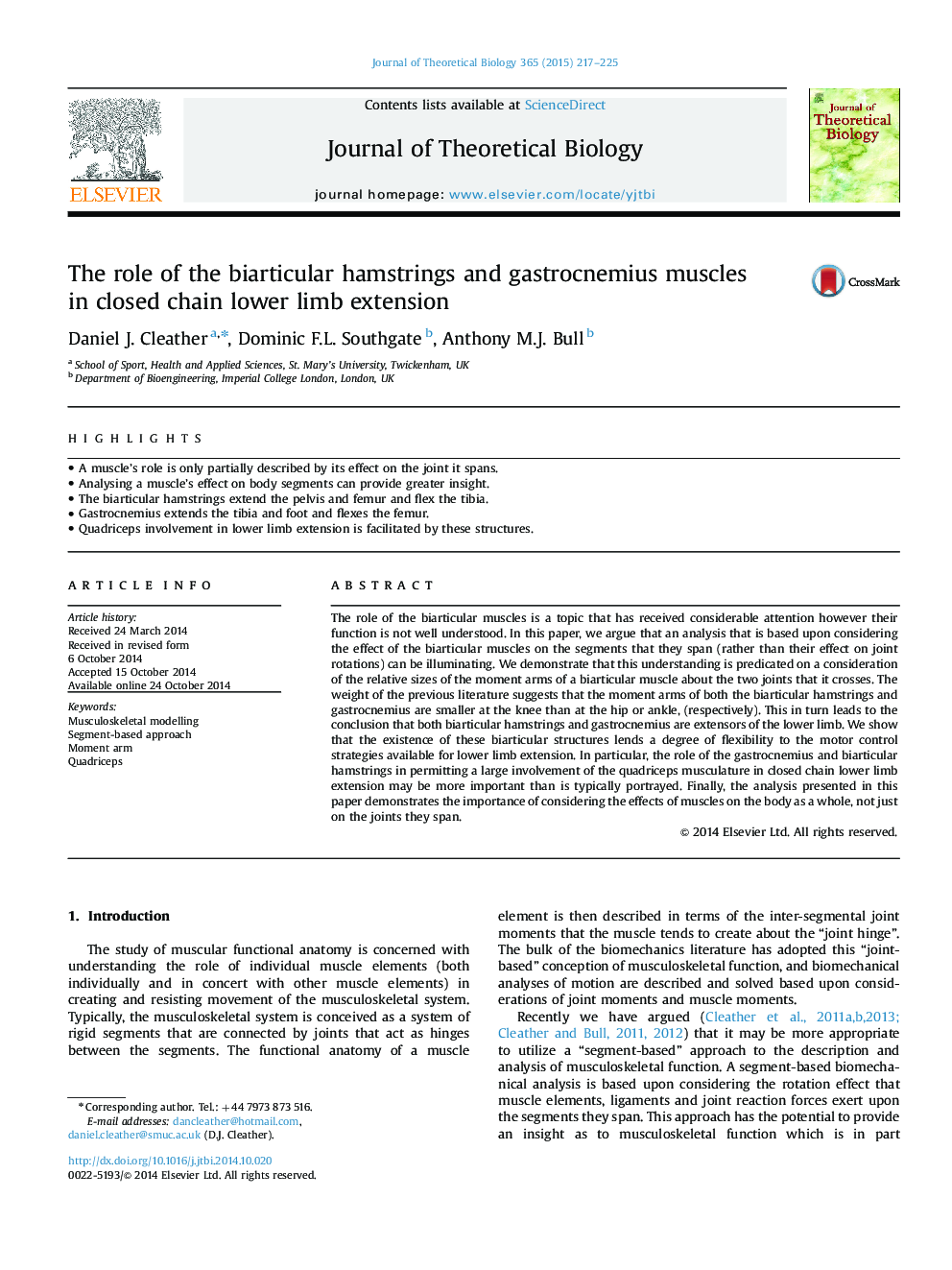| Article ID | Journal | Published Year | Pages | File Type |
|---|---|---|---|---|
| 6370016 | Journal of Theoretical Biology | 2015 | 9 Pages |
â¢A muscle's role is only partially described by its effect on the joint it spans.â¢Analysing a muscle's effect on body segments can provide greater insight.â¢The biarticular hamstrings extend the pelvis and femur and flex the tibia.â¢Gastrocnemius extends the tibia and foot and flexes the femur.â¢Quadriceps involvement in lower limb extension is facilitated by these structures.
The role of the biarticular muscles is a topic that has received considerable attention however their function is not well understood. In this paper, we argue that an analysis that is based upon considering the effect of the biarticular muscles on the segments that they span (rather than their effect on joint rotations) can be illuminating. We demonstrate that this understanding is predicated on a consideration of the relative sizes of the moment arms of a biarticular muscle about the two joints that it crosses. The weight of the previous literature suggests that the moment arms of both the biarticular hamstrings and gastrocnemius are smaller at the knee than at the hip or ankle, (respectively). This in turn leads to the conclusion that both biarticular hamstrings and gastrocnemius are extensors of the lower limb. We show that the existence of these biarticular structures lends a degree of flexibility to the motor control strategies available for lower limb extension. In particular, the role of the gastrocnemius and biarticular hamstrings in permitting a large involvement of the quadriceps musculature in closed chain lower limb extension may be more important than is typically portrayed. Finally, the analysis presented in this paper demonstrates the importance of considering the effects of muscles on the body as a whole, not just on the joints they span.
